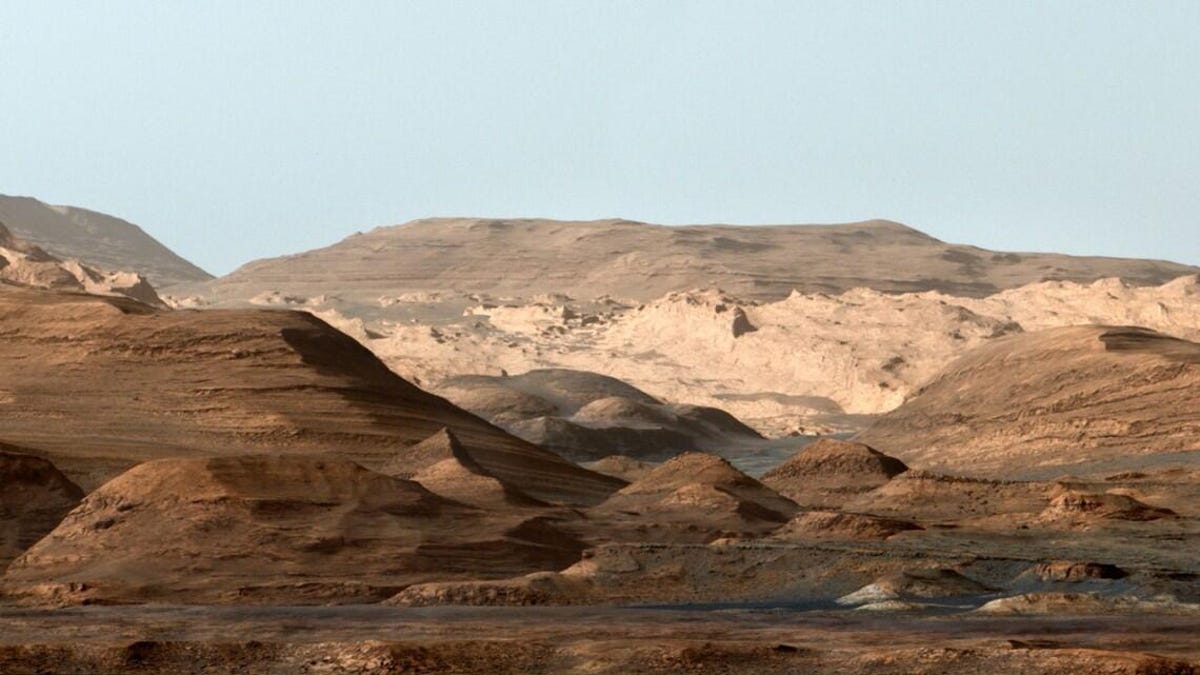NASA Curiosity rover spots signs of 'unimaginable' Mars megafloods
A massive meteor impact may have triggered shocking floods across the Gale Crater on Mars.

This image is a composite false-color view of Mount Sharp in the Gale Crater on Mars. The blue sky is rendered to resemble Earth to help highlight the stratification layers in the landscape.
NASA Curiosity rover's home-away-from-home in the Gale Crater on Mars seems like a fairly chill place. It's a bit windy and dusty, but it's dry and the rocky landscape is settled and calm. It wasn't always like that. Scientists have found evidence of brutal megafloods from deep in the crater's past.
Mars' wet history has been coming into greater focus in recent years. A study published in the journal Scientific Reports this month gives us our first identification of megafloods thanks to on-the-ground observations made by Curiosity.
"Deposits left behind by megafloods had not been previously identified with orbiter data," said co-author and astrobiologist Alberto G. Fairén in a Cornell University statement last week.
The megaflooding would have taken place about 4 billion years ago and was likely triggered by a meteor impact that heated up ice on the planet's surface, creating rainfall and sending flash floods gushing across the landscape. Cornell described these events as "floods of unimaginable magnitude."
The megafloods left behind telltale evidence of in the form of "giant wave-shaped features in sedimentary layers of Gale crater." These are called "megaripples" or antidunes. The formations reach 30 feet (9 meters) in height and are spread out around 450 feet (137 meters) apart. These features look familiar to researchers who have seen similar shapes caused by melted-ice floods in Earth's past.
The remnant signs of megafloods in Gale Crater point to a warm and wet climate long ago. "The planet had the conditions needed to support the presence of liquid water on the surface – and on Earth, where there's water, there's life," said Fairén.
Whether Mars was once home to microbial life is still an open question, but it's one NASA's Perseverance rover will investigate once it lands in February 2021.
Water might not be just a lost relic from Mars' history. Research suggests there may be ancient underground lakes hidden away on the red planet. NASA also created a "treasure map" to water ice deposits in 2019 that could come in handy for future human explorers. Those same explorers will be grateful to know the Mars megafloods are long gone.

